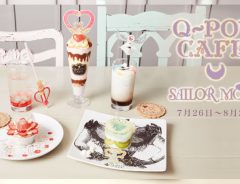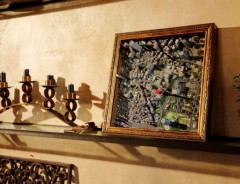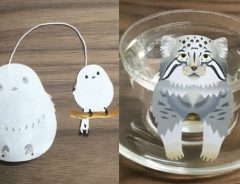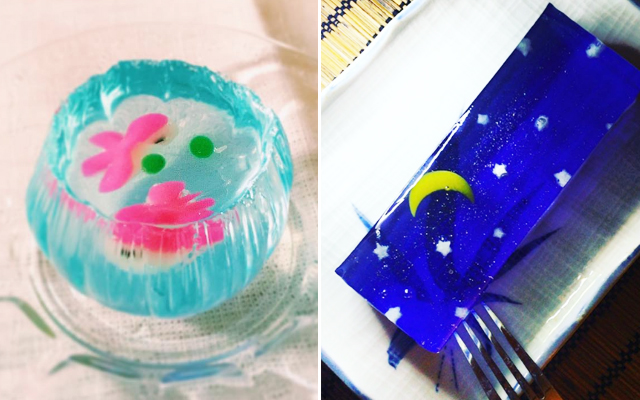- Source:
- Temari / Kameya Kiyonaga / fairy.tom / tomatojiru / 719shi_hrom / chiechiyan / ayanocchey / shizuka2118 / emi78m
- Tags:
- Confectionery / Dessert / Japan / Sweets / Traditional
Related Article
-

Furloughed during the COVID-19 Scare
-

Themed Cafe Turns Iconic Sailor Moon Items Into Deliciously Delectable Desserts
-

You Wouldn’t Want To Mess With This Stray Cat While It’s Having A Meal
-

Keep Your Favorite Places Close With These 3D Maps Of Japanese Cities
-

Bathroom Notice Asks Patrons To “Work Together” When Using The Malfunctioned Bidet
-

Long-Tailed Tit And Manul Cat Teabags Are Here To Be Your Adorable Teatime Buddies



With the amount of attention to detail often placed in Japan-made products, it doesn't come as a surprise that even simple snacks and desserts have evolved into what can be regarded as true works of art. In fact, many traditional wagashi (Japanese sweets) stores have become known to create fun, colorful Japanese desserts while still maintaining the delicate charm of their traditional forms.
The Japanese are also famous for loving the four seasons, as well as the wide variety of seasonal foods that can be enjoyed only during that particular time of year. Luckily for everyone who’ll be in the country during the summer, there are traditional Japanese sweets that will not only satisfy your sweet tooth, but will also transport you to a summer wonderland of exquisitely made desserts. Here are 5 of the most beautiful and popular — all of which you’ll want to act quickly to get.
1. Amanogawa from Shichijyō Kanshūdō (Kyoto)
Amanogawa is a brilliantly colored yōkan which are jellied desserts made of red bean paste, agar, and sugar. Eaten cooled, its sweet, refined flavor is reminds us of the bittersweet love story of Otohime and Hikoboshi. Unfortunately this dessert is no longer available online, but you can head on over to a store and buy some there.
Shichijyō Kanshūdō
Location: 551 Nishinomon, Honmachi Higashi Iru, Shichijyo Dori, Higashiyama, Kyoto
Hours: 10AM~6PM Every Day
More Information Here
2. Kingyo Bachi from Kōrakuya (Kyoto)
Goldfish often make their appearance at Japanese summer festivals, where children play a game of scooping them out from a pool to take them home. This Kyoto sweet is reminiscent of such scenes from festivals, and is made from agar and bean paste. We could stare at these edible goldfish floating in their little fishbowls forever.
Kōrakuya
Location: 285-59 Shin-Goryoguchi, Karasuma Higashi Iru, Kuramaguchi Dori, Kyoto
Hours: 9AM~8PM (Closed Sundays)
More Information Here
3. Hoshi Zuku Yoru from Kameya Kiyonaga (Kyoto)
Source: Kameya Kiyonaga
Hoshi Zuku Yoru is another starry rendition of yōkan, but has a fruity flavor of passion fruit and lemon. These are also best served cold, and will be excellent after-dinner desserts to indulge in during the hot summer nights.
Kameya Kiyonaga
Location: South 534 Gion Ishidanshita, Higashiyama, Kyoto
Hours: 8:30AM~5:30PM (Closed Wednesdays)
More Information Here
4. Natsu Temari from Temari (Kamakura)
Source: Temari
Source: Temari
Temari balls are handmade Japanese folk art with a long history. They require precision and patience to create, much like these extraordinarily gorgeous and delicious-looking temari confections. They bear a strong resemblance to marzipans, and will be wonderful little snacks to have with a cup of warm green tea.
Temari
Location: 1418 Yamanouchi, Kamakura, Kanagawa
Hours: Reservations only (Call 0467-33-4525 (+81-467-33-4525))
More Information Here
5. Kingyo from Souke Minamoto Kitchoan (Ginza)
These goldfish are made of jelly and agar, and they sway to and fro in their jiggly jelly confines. They’re not just sweet and refreshing; they even contain the essence of Le Potager du Roi, a fruit grown by Versailles, adding an extra layer of luxuriousness.
Minamoto Kitchoan
Location: 7-8-9 Ginza Chuo, Tokyo
Hours: Monday-Friday: 10AM~9PM/Weekends and Holidays: 10AM~7PM
More Information Here